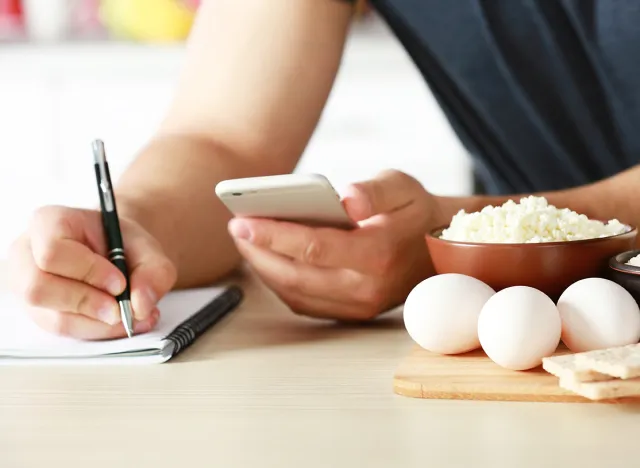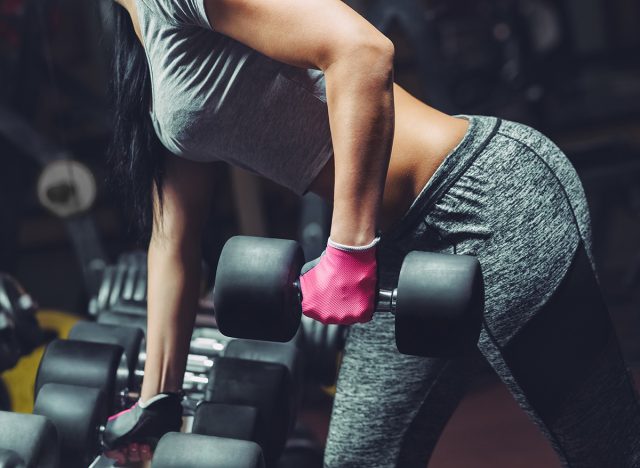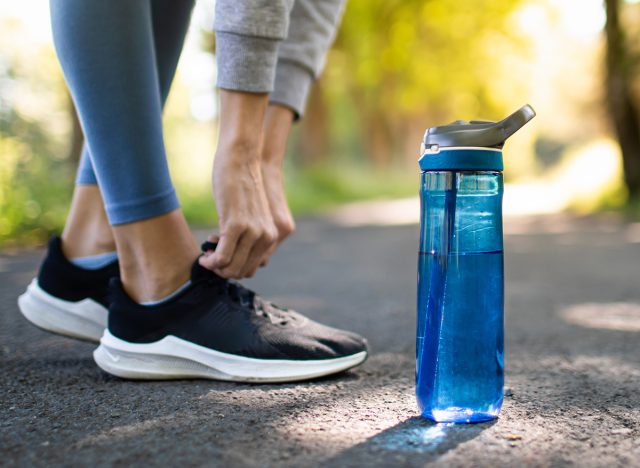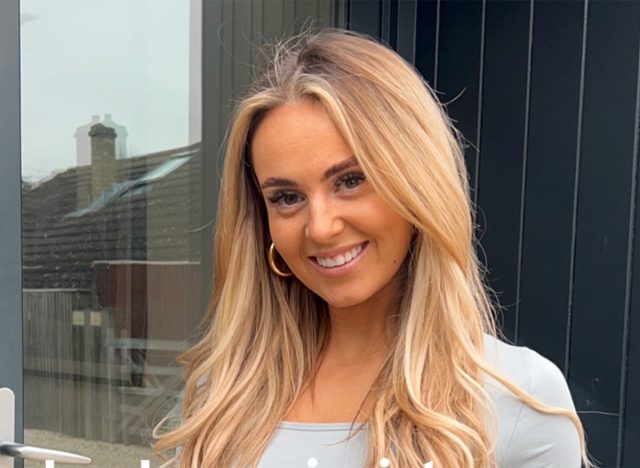I'm a Transformation Coach and This Is How to Lose 22 Pounds in 12 Weeks
Hebe Hiom (@hebehiompt) is an online transformation coach and personal trainer with over 419,00 followers on TikTok. She regularly shares tips and tricks on how to lose weight without going to extremes. In one of her viral videos she reveals how easy it is to lose 22 pounds in just 12 weeks. We also asked The Diet Diva, Tara Collingwood, MS, RDN, CSSD, LD/N, ACSM-CPT, a Board Certified Sports Dietitian, to weigh in on her suggestions.
First, Don't Aim to Lose More Than 22 Pounds in Three Months
@hebehiompt Replying to @idk how to lose 10-11kg in 12 weeks 🩷👏🏼 #weightloss #fatloss #fatlosscoach ♬ original sound – Hebe Hiom
"First of all, I want to set your expectations. So we would normally suggest that one to two pounds per week is quite a healthy amount of weight loss," Hebe says, noting that 22 pounds is the "maximum" amount of weight you should lose in three months. "Now, obviously there are ways that you can go about this to make it a little bit more drastic, but we tend to say for a general population that is a relative amount."
The rate of weight loss "really depends on how much weight you have to lose," says Collingwood. "If you only have 5 to 10 pounds it will come off more slowly, but if you have more weight then it is realistic to lose up to 2 pounds per week. If you try for more than that you will likely lose a larger proportion of muscle than fat."
Related: 3 Tips to Lose 80 Pounds According to Weigh Coach Who Lost 120 Pounds
Stay in a Caloric Deficit

Hebe explains that "the most important thing is going to be your calorie deficit," explaining that it means "that you are eating less calories than you burn per day." If you want to eat more, "there's lots of different ways that you can increase your activity to increase your calorie deficit, meaning that you don't have to eat such little calories."
She suggests using a TDEE calculator to figure out how much you should eat. "Calories in vs calories out is always a good way to look at weight loss," agrees Collingwood. "Instead of just cutting out calories, increasing caloric burn can boost metabolism and not leave you feeling so deprived and with the 'diet' mentality."
Exercise Regularly

"To ensure that your activity levels stay high," she also suggests working out "probably three times per week, if not a little bit more. I like to say four times is a really nice and steady kind of input for me." She recommends incorporating "some kind of cardio," but finding something that you actually enjoy. "As long as you are getting energy output, that is the best thing that you can do. Now, if you want to tone up and feel a little bit more muscular, then obviously weight training is going to be the weight forward. But if you are not necessarily concerned about that, then obviously do whatever works best for you."
Finding exercises that you enjoy doing makes it much more sustainable, agrees Collingwood. "Aim for doing something most days of the week, but a minimum of 3 days per week of aerobic and 2 days per week of resistance training is ideal."
Hydrate

She mentions that there are a few other "non-negotiables" that she gives her clients. One is prioritizing hydration. "So we would say around two to three liters of water per day, and especially in a calorie deficit, that will just keep you fuller for longer because quite often we will mistake feeling hungry when actually we are just thirsty," she explains.
"Hydration is key for many areas of wellness, especially when it comes to weight loss," agrees Collingwood, noting that "water is the best way to hydrate!"
Sleep

"Another thing to focus on is your sleep," she says. "So we would say anywhere from seven to eight hours, making sure you have a really nice bedtime routine, probably read before bed," she continues. "If we miss out on sleep, we do actually increase our hunger hormone, which means that the next day we might find it harder to stick to our calories and our food."
Sleep affects every single cell in your body and it is critical to all aspects of health, says Collingwood. "Chronic sleep deprivation has been linked to weight gain because of it's effect on hunger and satiety, but it is also critical for mood, muscle recovery, and more that can affect our eating and exercise habits."
Related: Kelli Ramirez Shares Workout Responsible for Her "Immaculate Pump"
Watch Out for Plateaus

"Now, another thing that is very important is along the whole process, you might find that you start losing weight really well and then you start to plateau, and that is purely just because you are not sitting in as much as the deficit anymore because your weight is going down. So obviously when your weight goes down, as does your TDEE," she says.
"Many people don't realize that as you lose weight you need fewer calories to maintain that lower weight," explains Collingwood. "If you aren't carrying around that extra 20 pounds on your body anymore, it takes less energy (calories) to do everything from sleeping to walking."
Lift Heavy
@hebehiompt Don't make the same mistakes I did in the gym… easier said than done. But genuinely my results would have been SO much better as I'd have been training optimally! #gym ♬ original sound – Hebe Hiom
In another video she reveals one fitness mistake she made early on. "I avoided lifting heavy for the first year of my training and to this day I mourn the gains that could have been," she says in the TikTok.
Any weight lifting is good to maintain and/or build muscle," agrees Collingwood. "Depending on your potential limitations and goals, you can choose the right amount of weight you are lifting. Hire a personal trainer even for a few sessions to have them help you know where to start."
💪🔥Body Booster: To avoid plateaus, try and increase energy expenditure – whether than means exercising longer or increasing weight or resistance. And if you enjoyed this article, don't miss 12-3-30 Walking Method: 20 Proven Tips to Lose Weight Faster.





